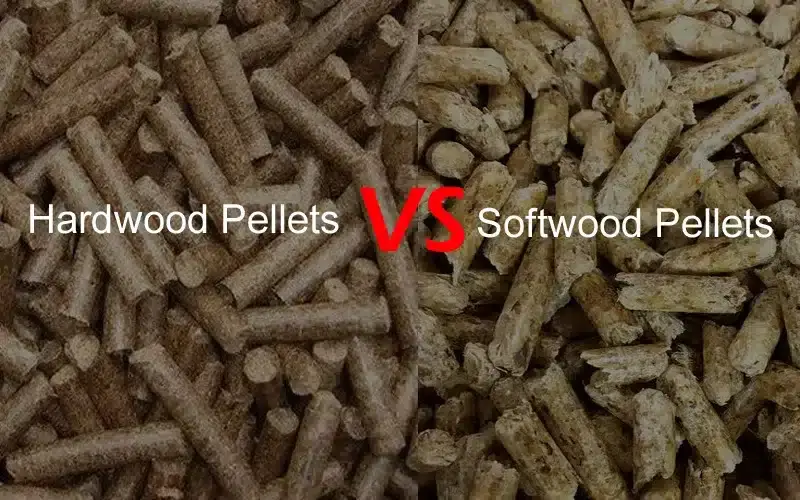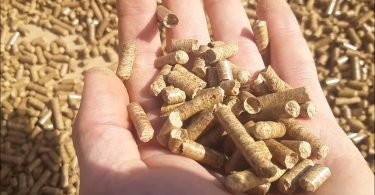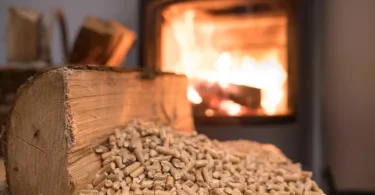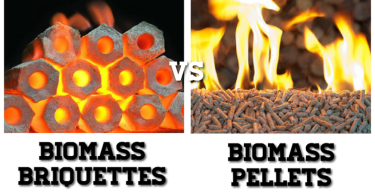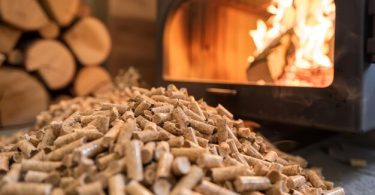- Main types of wood pellets for heating purposes
- Softwood pellets
- Hardwood pellets
- Differences Between Softwood and Hardwood Pellets
- Heat Output and Efficiency
- Ash Content
- Cost comparison
- Sustainability and environmental impact
- The best wood pellets for heating: The role of the manufacturing process
- Manufacturing quality: The key to optimal wood pellet performance
- Questions to ask yourself before picking the right wood pellets for your heating needs
Hardwood pellets or softwood pellets? If this question is swirling, then you’re in the right place. Those new to pellet heating seem to have this question because there are too many myths surrounding the hardwood and softwood pellet issue; so, you’re not alone. In this article, we’ve summed up all the information you need to know about hardwood and softwood pellets, which will help you make the right choice for your heating needs. Let’s get into the basics first and then move into further details.
Main types of wood pellets for heating purposes
Yes, as we already know, two types of wood make up all heating pellets—hardwood and softwood.
Softwood pellets
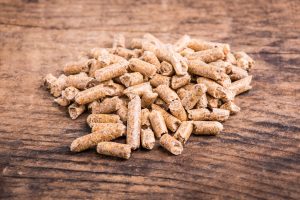
softwood pellet
Softwood pellets are made from trees like fir, pine, and spruce. These pellets seem to be lighter and less substantial. Softwood is better for the environment as it generates less toxic airborne particulate emissions and carbon dioxide. It contains sap and resins, which have a higher heat value, thereby resulting in ignition.
The best softwood pellets tend to burn cleaner and hotter, producing more heat consistently. When creating softwood, bark is never used. It is 100% white wood and hence boasts higher BTUs, almost by 10% – 15%. Ultimately, it is the least expensive option. We can give you the answer to your question right away if you are looking for a budget-friendly option.
Hardwood pellets
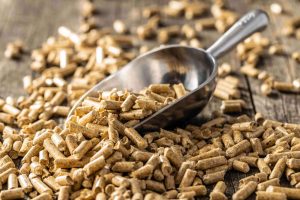
Hardwood Pellets
Hardwood pellets, as the name implies, are made from hardwood trees like oak, hickory, and maple. As these trees are denser and harder, their pellets are more substantial. Hardwood pellets offer high heat output and efficiency; hence, they are an excellent choice for regions that have colder climates.
Hardwood pellets provide 5-10 hours longer burn time. Using hardwood leads to a significant level of performance from your stove. However, hardwood pellets cost a little more than softwood pellets.
Differences Between Softwood and Hardwood Pellets
There are a few factors, beyond their breed, that differentiate hardwood pellets from softwood pellets:
Heat Output and Efficiency
Although hardwood and softwood pellets have similar densities, their primary difference lies in their British thermal unit (BTU) measurements.
A BTU measures the heat output of a fuel source. One BTU is the amount of heat required to raise the temperature of one pound of water by 1 degree Fahrenheit at its maximum density (39 degrees Fahrenheit).
To heat a 2000-square-foot home, wood pellets should produce approximately 60,000 BTUs. Softwood pellets offer a higher BTU output than hardwood pellets, resulting in a hotter and longer burn. This increased heat output is attributed to the higher concentration of lignins, the natural polymers that bind wood together.
Ash Content
Ash content is another key factor distinguishing hardwood and softwood pellets. Wood pellets contain a small amount of non-combustible material that turns into ash after burning. While all wood pellets have less than 1% ash content, the exact percentage can vary between hardwood and softwood pellets.
Hardwood pellets can produce up to three times more ash compared to softwood pellets. Reduced ash content translates to less cleanup, more fuel available for combustion, and improved airflow within the stove.
Cost comparison
Softwood pellets are generally more affordable than hardwood pellets, making them a suitable choice for those with budget constraints or smaller heating needs. However, it’s important to note that pellet prices can fluctuate based on your location and the specific supplier you select.
Sustainability and environmental impact
Both hardwood and softwood pellets are renewable energy sources, offering a more environmentally friendly alternative to fossil fuels. However, there are notable differences in their sustainability and environmental impact.
Hardwood trees have a longer growth cycle compared to softwood trees, making them less renewable in general. However, depending on your region, hardwood trees might be more abundant, potentially offering a more sustainable option.
Softwood trees, on the other hand, grow at a faster rate and are more widely available than hardwood trees. This makes them a generally more sustainable option. Moreover, softwood pellets tend to produce fewer emissions compared to hardwood pellets, resulting in a lower environmental impact.
Hardwood and softwood pellets differ primarily in their source material, burn characteristics, and overall performance. Here are some key differences:
The best wood pellets for heating: The role of the manufacturing process
Both hardwood and softwood pellets undergo a similar manufacturing process, resulting in products with comparable densities. The burning performance of pellets is primarily influenced by the manufacturer’s methods rather than the specific type of wood used. Due to variations in manufacturing quality, some hardwood pellets may outperform certain softwood pellets, and vice versa.
Wood pellet production involves several key steps. Manufacturers begin by selecting suitable wood, grinding it into dust, compressing the dust into pellets, and drying the pellets before packaging and distribution. Refining the production process is crucial for producing high-quality wood pellets that offer optimal performance in your stove.
The geographic origin of the wood is another important factor influencing wood pellet quality. Even the same tree species can exhibit different characteristics when grown in different environmental conditions. The wood sourced from humid regions tends to produce pellets with higher moisture content. The ideal moisture level for wood pellets is around 6.5% or lower.
The region of origin can also affect the price of wood pellets, ultimately influencing their value in terms of heat output. For instance, wood sourced from remote areas might incur higher transportation and processing costs, leading to more expensive pellets.
Manufacturing quality: The key to optimal wood pellet performance
How should you select the best wood pellets for your stove? Ultimately, the ideal choice depends on your personal preferences and the quality of the wood pellets you choose.
The type of wood used is not the primary determinant of pellet quality. Whether the wood is hardwood or softwood has minimal impact. Factors such as the manufacturer and the wood’s region of origin exert a more significant influence on pellet quality than the wood type. The ash content of a pellet is influenced by the wood’s origin and the quality control standards the manufacturer enforces with its raw material suppliers.
The pelletizing process allows manufacturers to exercise precise control over the composition of wood pellets. When you use raw wood in a stove, the results are determined by natural factors; however, when you choose wood pellets, it depends on the manufacturer’s efforts and effectiveness. The manufacturer determines the quality standards for the pellets and the processes they undergo to meet customer expectations.
The quality standards of your wood pellet company significantly impact your purchasing decision. You should analyze and choose a manufacturer that produces pellets with optimal characteristics.
Questions to ask yourself before picking the right wood pellets for your heating needs
As far as choosing between hardwood and softwood pellets is concerned, there is certainly no one-size-fits-all solution. The choice for you will largely depend on your budget, heating needs, and environmental concerns. Here are a few questions to consider when making your decision:
- What is your budget?
- How large is your space?
- How concerned are you about the impact of your heating source on the environment?
- How cold does your area get?
Considering these factors will help you make an informed choice on which type of wood pellet is ideal for your heating needs.
Conclusion
The debate between hardwood and softwood pellets doesn’t have a definitive winner. Both types offer distinct advantages and disadvantages, and the best choice for you will depend on your requirements. Regardless of whether you opt for hardwood or softwood pellets, you can rest assured that you’re choosing a renewable energy source that benefits both the environment and your wallet.
A quick recap of an important aspect before you make a choice. Don’t forget that raw hardwood generally burns longer due to its higher density. However, softwood often has a higher BTU output due to its lignin content, resulting in a hotter burn.

